It’s an annual harbinger of spring: Birds singing, building nests, and laying eggs. But the timetable has been gradually changing. A new study finds that many bird species are building their nests and laying eggs nearly a month earlier than they did a century ago. Researchers compared bird egg information from museum collections with recent bird behavior observations and found that about one-third of the bird species that nest in Chicago have moved their egg-laying to an average of about 25 day
1 / 6
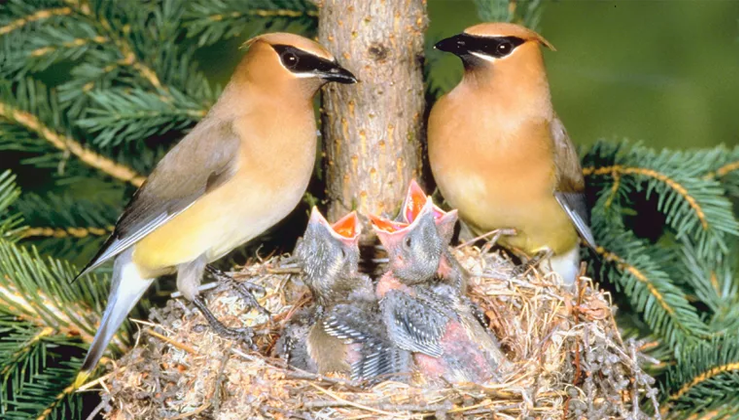
The likely culprit, the researchers believe, is climate change. “Much data collected over the last few decades have shown that many species of animal and plant are changing the timing of their ecologies—leaf-out and flowering of plants, timing of migration of birds and some insects, and timing of nesting ecology of birds,” co-author Chris Whelan, an evolutionary ecologist at the University of Illinois at Chicago, tells Treehugger. John Bates, the curator of birds at the Field Museum, realized that the egg collections of his and other museums hold old but accurate records on the timing of nesting of many bird species. Bates suggested comparing modern nest efforts with nesting behaviors associated with eggs in the museum’s collections. Some of that data went back to the 1870s. Bates, the study’s lead author, became interested in studying the museum’s egg collection after editing a book about eggs. “Egg collections are such a fascinating tool for us to learn about bird ecology over time,” he says. “I love the fact that this paper combines these older and modern datasets to look at these trends over about 120 years and help answer really critical questions about how climate change is affecting birds.”
2 / 6
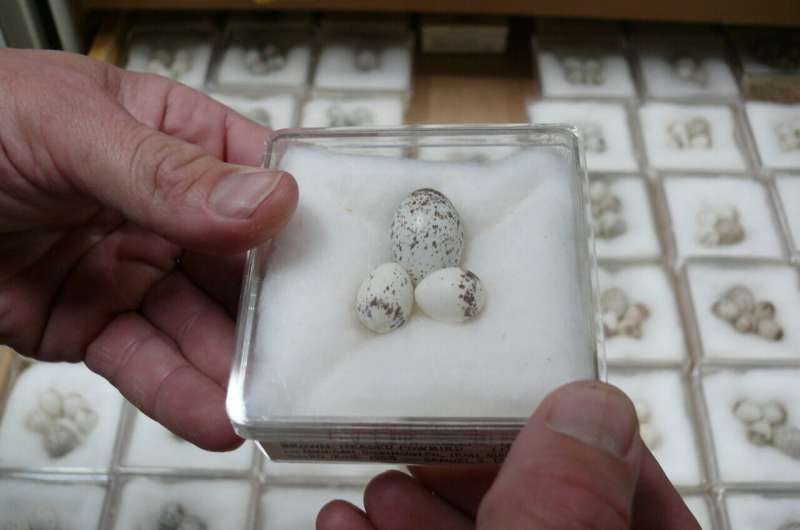
The Field Museum’s egg collection is filled with hundreds of eggs with the inner contents blown out. Most were collected about 100 years ago. Each egg is stored along with handwritten notes about what bird it came from and exactly what day it was collected. There’s not much to the collection after the 1920s when egg collecting was no longer so popular with scientists or hobbyists. “These early egg people were incredible natural historians, in order to do what they did. You really have to know the birds in order to go out and find the nests and do the collecting,” says Bates. “They were very attuned to when the birds were starting to lay, and that leads to, in my opinion, very accurate dates for when the eggs were laid.”
3 / 6
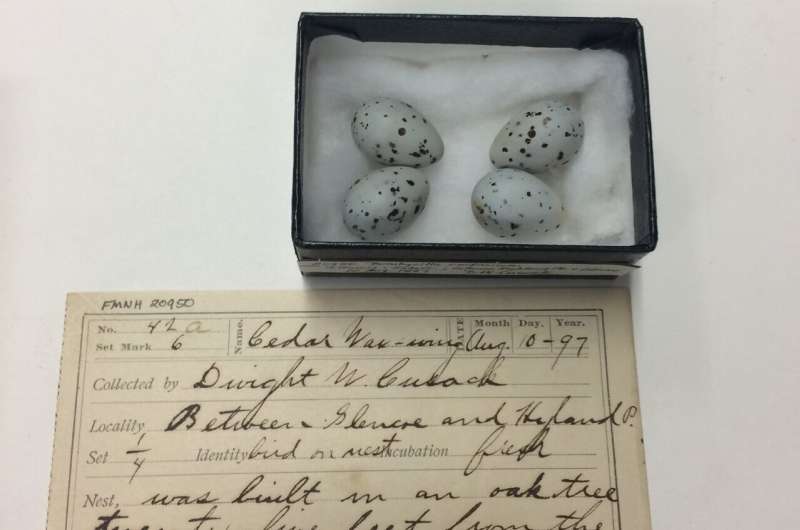
In addition to that set of data, the researchers had information collected on eggs from 1990 to 2015 by Bill Strausberger, a research associate at the Field who studied cowbirds, and from Whelan, who had amassed modern songbird nesting data. They filled in any gaps in data by creating a statistical nesting model for those missing years. Then they compared the century-old egg information to the contemporary nesting details. They found that about one-third of the 72 bird species for which they had old and new data were nesting earlier in the year. The actual extent varied a bit among species.
4 / 6
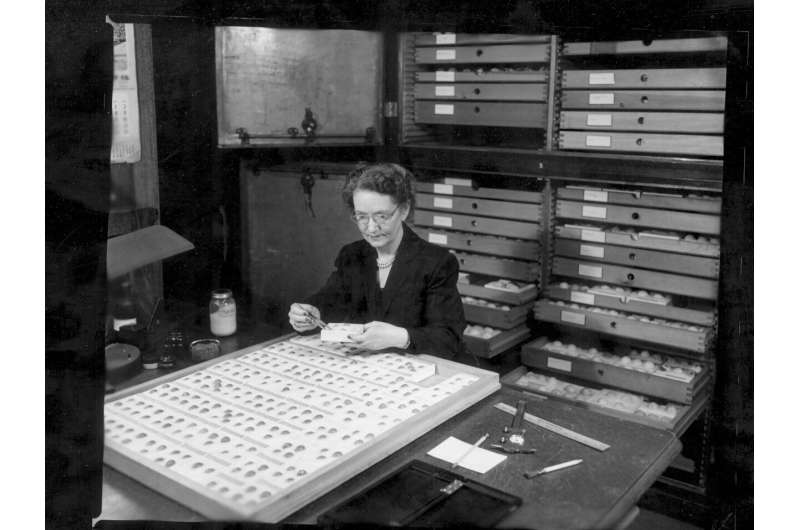
“What most surprised me was that many long-distance migrant species were among those showing a change in timing. This was surprising because the timing of their migration is linked more to changes in relative hours of daylight than to changes in temperature or other climate-related factors,” Whelan says. “The change in timing is still possible, however, because they tend to arrive on the breeding grounds with ‘time to spare,’ so to speak. Once here, they seem to adjust based on prevailing climatic conditions, which have slowly been changing over the course of our study, from the 1870s to modern times.”
5 / 6
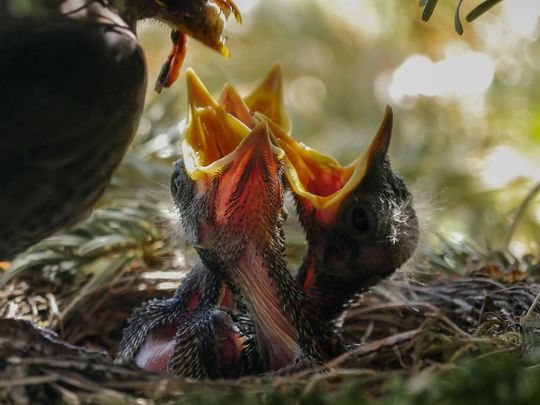
Why Climate Change Matters? To understand why the birds were laying their eggs earlier, the researchers considered climate change as a potential factor. Because they couldn’t find temperature data for the area dating as far back as the eggs, they used the amount of carbon dioxide in the atmosphere, which can be used to approximate temperature. The researchers found that atmospheric CO2 concentrations correlated with the changes in when eggs were laid. Although the temperature changed by only a few degrees, it was enough to mean different insects emerged and different plants bloomed. And the researchers point out that it could have an impact on what food is available for birds.
6 / 6
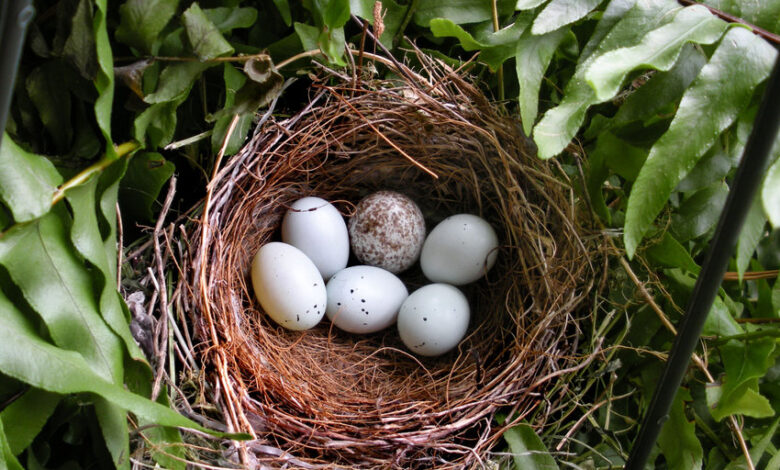
“The findings are important because changes in climate that drive changes in the timing of ecological events (a phenomenon known as phenology) can lead to disruptions in things like the emergence of leaves of trees and the insect herbivores that feed on those leaves, which may lead to ‘mismatches’ with the timing of birds, whose young depend on parents foraging for those insects to provide food for the developing young,” Whelan says. “If the timing of such events becomes highly mismatched, parent birds may lose the ability to adequately provision their offspring with food, leading to offspring death and reproductive failure. Luckily, we have not yet documented such mismatches in our study area.” Bates points out that breeding bird data over the last 40 years has found that many North American bird species have had significant drops in population. Researchers want to know why this is happening.

